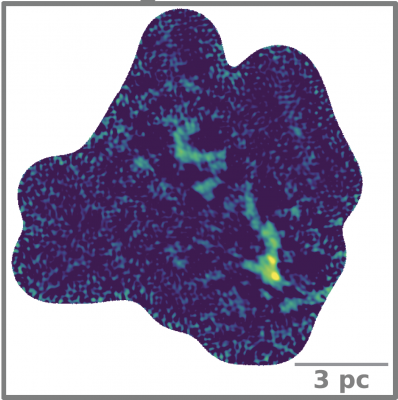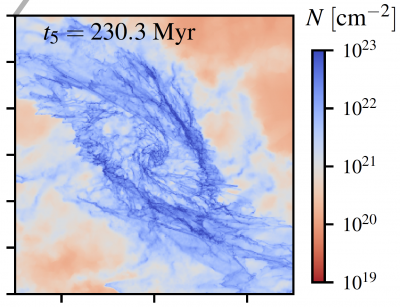Dr. Cara Battersby has been awarded an NSF early CAREER grant ! This award (for nearly $700k) is entitled “CAREER: Shining STARs Amidst the Turbulence” and will be used to study star formation in our Galaxy’s extreme center, by comparing large observational surveys with custom numerical simulations. As part of this program, Dr. Battersby is also founding a new outreach program, named UConn STARs (Science, Technology, and Astronomy Recruits) to recruit, retain, and support physics undergraduate students from historically excluded groups.
Dr. Battersby and her team at the Milky Way Laboratory will perform the first-ever systematic study of the role of turbulence on the Core Mass Function (CMF, the precursor of the stellar initial mass function) in the extreme environment of our Galaxy’s Central Molecular Zone (CMZ, the inner 500 pc of the Milky Way). We will leverage statistical comparisons between cutting-edge numerical simulations and unprecedented large observing programs, spearheaded by the PI, to disentangle the physical origin of CMZ turbulence and measure its properties (the Mach number, virial parameter, and solenoidal fraction).



By taking advantage of pioneering new Atacama Large Millimeter/Submillimeter Array (ALMA) data, we will measure the CMF across the CMZ for the first time and perform a systematic comparison with the CMF in the Galactic disk. We will test for variation in the shape of the CMF as a function of turbulent environment. Since the extreme conditions present in the CMZ are thought to be commonplace at high redshift, the results of the proposed study will provide insight into the role of turbulence in the stellar initial mass function across a range of galaxy types and redshifts.
The results from this research will be brought into under-resourced K-12 classrooms through lesson plans jointly developed by K-12 teachers and undergraduate students from traditionally under-represented groups. We aim to recruit and retain students from under-represented groups in STEM through a new mentorship program UConn-STARs.